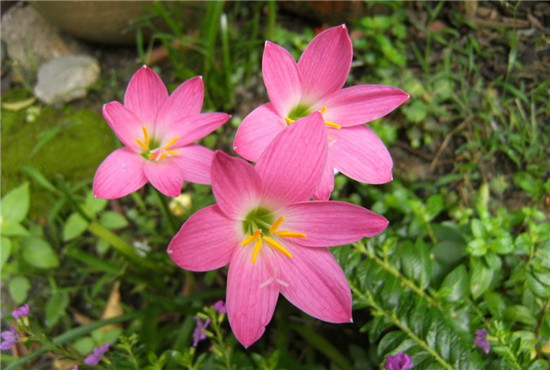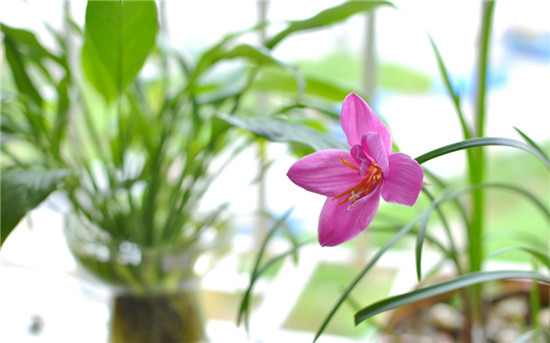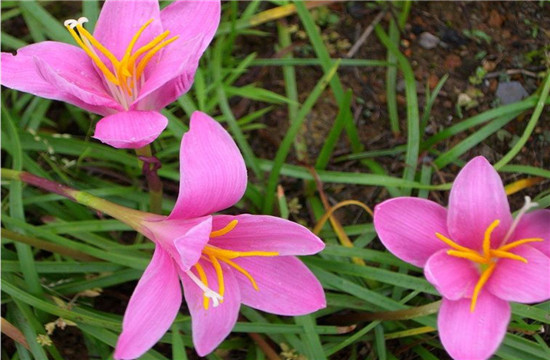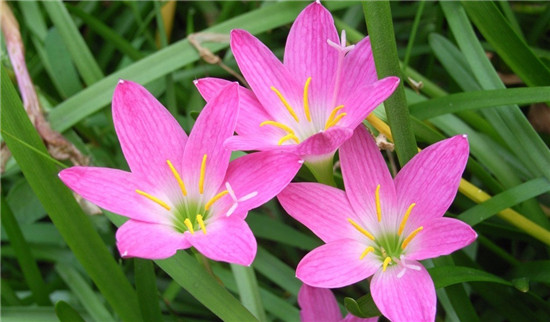Culture methods of Carthamus tinctorius Culture skills of Carthamus tinctorius
Safflower onion orchid is a plant of the genus Allium in Lycoridaceae. The flowers are solitary on the top of the flower stem and the flowers are rosy or pink. Next, let's take a look at the breeding methods of safflower onion orchid.

Safflower onion orchid, also known as leek lotus, leek orchid, leek lotus, wind and rain flowers, etc., originated in Mexico and is widely cultivated all over the world. It is suitable for planting in clusters in flower beds, flower diameters and grasslands, and can also be potted for indoor viewing. It is a semi-negative ground cover flower widely used in gardens.
Safflower onion orchid likes to be warm, moist and sunny, but also resistant to semi-shade and moisture. Resistant to cold, semi-overcast and damp. The cold resistance is slightly poor. It is suitable for sandy loam with good drainage and rich rotting quality.
Safflower onion orchid has the advantages of robust growth and simple maintenance and management. If you plant in the garden, choose a sunny, warm, sheltered place, and apply topdressing 3-4 times during the growth and flowering period, you will be able to grow leaves and flowers. Cultivated in the open field in the middle and lower reaches of the Yangtze River, after severe winter frost, the old leaves withered, the bulbs could stay in the field for the winter, and blossomed as usual the following year. The safflower onion orchid plants were low and numerous, and the florescence was from June to September.

The potted soil was mixed with 2 parts of loam, 1 part of rotten leaf soil and peat with a small amount of fine sand, and a small amount of bone powder and mature compost. During the growth period, there should be sufficient sunlight and moisture. After a batch of flowers withered, water was suspended for 7-8 weeks and then resumed watering. With such a dry-wet interval, 2-3 crops of flowers could bloom within a year.
The safflower onion orchid has a low cluster of plants and many flowers, with a florescence from June to September. In addition to flowers, it looks like leek, oil-green leaves, flat linear, curved hanging low, almost to the ground. Blooming in spring and summer, with red pollen, it is suitable for planting in clusters in flower beds, flower paths and grasslands, and can also be potted for indoor viewing. It is a semi-negative ground cover flower widely used in gardens. The same breed also has white onion orchid and so on.
Safflower onion orchid can be propagated by seed and can be planted by split plant or bulb, which can be carried out all year round, but it is the best in spring. As long as the root of the ball is dug up, 3-5 balls are planted in each place and watered to maintain proper humidity, it is very easy to survive. When digging up the bulbs, be careful not to hurt them. If there are too many leaves and flower stems, cut off the upper part and keep the complete bulb and 6-8 cm leaves for planting. If the bulbs have germinated buds and fully watered after branching, safflower onion orchids can still bloom.

Safflower onion orchid planted in the garden, choose a sunny, warm, sheltered place, the growth and flowering period of 3-4 times topdressing, can flourish leaves and flowers. Cultivated in the open field in the middle and lower reaches of the Yangtze River, after severe frost in winter, the old leaves withered and the bulbs could stay for the winter and blossom as usual the following year. The potted soil was mixed with 2 parts of loam, 1 part of rotten leaf soil and peat with a small amount of fine sand, and a small amount of bone powder and mature compost. Safflower onion orchid growth period should have sufficient sunlight and moisture, a batch of flowers withered, suspended watering for 7-8 weeks and then resumed watering, so dry and wet interval, can blossom 2-3 stubble in a year.
Organic fertilizer can be used once every 2-3 months to increase phosphorus and potassium fertilizer proportionally, which can promote bulb hypertrophy and flowering of safflower onion orchid. When the plants are clustered and crowded, the ramets must be forced. Strong in nature, drought-resistant and high-temperature resistant, easy to cultivate, and the suitable temperature for growth is 22-30 degrees. The depth of introduction and planting is slightly exposed at the top of the bulb, and the bulb is divided once every 2-3 years. After a batch of flowers fade, the water should be controlled for 50-60 days, and then the normal water supply should be restored. Such alternation of dry and wet can promote the flowering of safflower onion orchid for many times, and it can blossom 2-3 times a year.

The above is the whole content of the culture methods and techniques of safflower onion orchid that I summarized for you. I hope this article can help you all. Please continue to follow us.
Related
- Wuhan Hospital Iron Tree Blooming Result Was Instantly Frightened by the Gardener Master
- Which variety of camellia is the most fragrant and best? Which one do you like best?
- What is the small blue coat, the breeding methods and matters needing attention of the succulent plant
- Dormancy time and maintenance management of succulent plants during dormancy
- Minas succulent how to raise, Minas succulent plant pictures
- What are the varieties of winter succulent plants
- How to raise succulent plants in twelve rolls? let's take a look at some experience of breeding twelve rolls.
- Attention should be paid to water control for succulent plants during dormant period (winter and summer)
- Watering experience of twelve rolls of succulent plants
- Techniques for fertilizing succulent plants. An article will let you know how to fertilize succulent plants.



